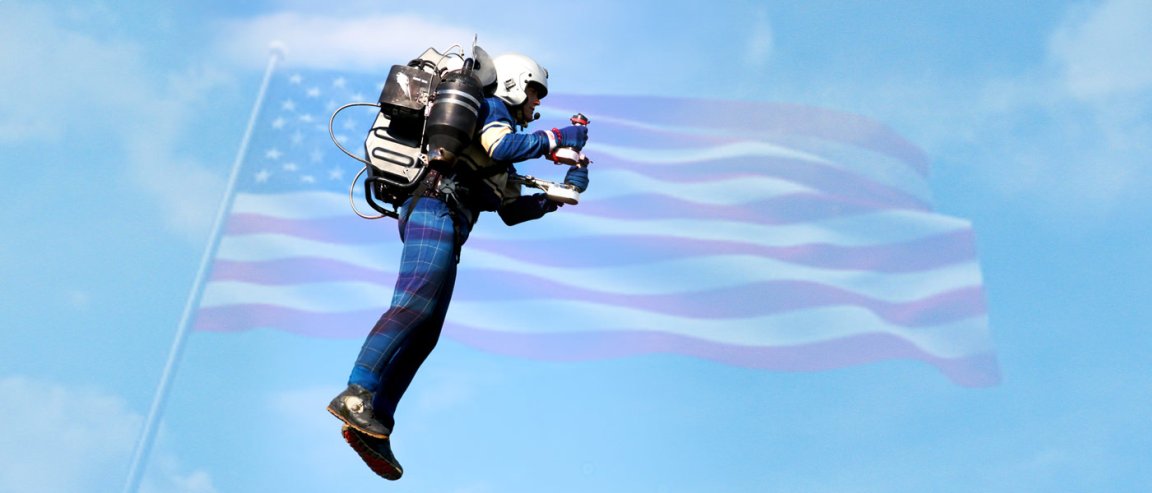
Rocket Men
Back in 2015, the world was given a real treat as the first true jetpack was unveiled. More interesting, however, is that the innovation drew attention from the U.S. Military.
The Wall Street Journal reports that Jetpack Aviation is in talks with U.S. special forces for the development of a militaristic jetpack. The WSJ said that the company now has a research and development agreement with the U.S. Special Operations Command for the development of a four-turbine jetpack that will lift twice the weight as current models, and require twice the fuel.
The company’s current version of the jetpack is the JB9. In development for about 10 years and costing around $10 million, it is an 85-pound aluminum and carbon-fiber machine that burns 11 gallons of jet fuel for a 10-minute flight.

Further improvements to the JB 9 could include rocket-propelled parachutes, for use during unscheduled landings. For this, the nine-person firm is now seeking a $2-$5 million investment. It hopes to bring its jetpack to market for about $250,000 a piece.
A Cluttered Field
While Jetpack Aviation has certainly made strides in the field, it is far from the only player. The one closest to market is the Martin Jetpack, produced by Martin Aircraft Co. Ltd. produced in New Zealand. While it bends some of the jetpack rules by having the pilot strap himself into the machine, it has a maximum flight time of 30 minutes and a price tag of at least $250,000.
Meanwhile, former Swiss Army fighter pilot Yves “Jetman” Rossy has unveiled his “jetwing,” a 7-foot carbon-fiber wing with four small jet engines. It can reach 322 kph (200 mph) and fly for about 10 minutes. While French jet-ski champion, Franky Zapata, has set the Guinness world record for “farthest flight by hoverboard,” using the Flyboard Air, a hoverboard that runs on jet fuel.
Even in the most fantastical innovations do we see capitalism work its way to give us, the consumers, the best-finished product.